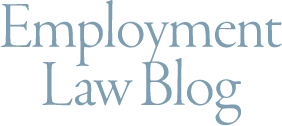On January 21, 2020, Governor Murphy amended the NJ WARN Act to require employers to provide severance pay to employees affected by mass layoffs. The amendment was originally to take effect on July 19, 2020, but as a result of stay-at-home orders due to the COVID-19 pandemic, the amendment will take effect on September 7, 2020. The amendment impacts employers with 100 or more employees.
The amendment also makes some other key changes to the NJ WARN Act. For example:
- An employer with 100 or more employees (regardless of part-time or full-time status) must provide at least 90 days’ notice before the first employee is terminated as part of a mass layoff, termination of operations, or transfer of operations. The existing law only requires 60 days’ notice.
- The NJ WARN Act will now be triggered when a layoff results in the termination of at least 50 full-time and/or part-time employees at an employer’s “establishment” (defined below). Under the existing law, the NJ WARN Act is only triggered when the termination of the 50+ employees makes up at least 1/3 of the total workforce of the establishment. Now, a layoff of at least 50 employees will be covered even if it only represents a small percentage of the workforce.
- The definition of “establishment” has also been amended and will now be defined as a single location or group of locations which are located in the State of New Jersey and have been operated by an employer for more than three years.
- Employers must provide terminated employees (again, regardless of part-time or full-time status) with severance pay equal to one week of pay for each full year of employment. In addition, employers who provide less than the required 90 days’ notice must pay terminated employees an additional four weeks of pay. Under the existing law, severance pay is only due if an employer does not provide the requisite notice.
Severance pay is calculated as the average regular rate of compensation received during the employee’s last three years of employment with the employer or the final regular rate of compensation paid to the employee, whichever rate is higher.




